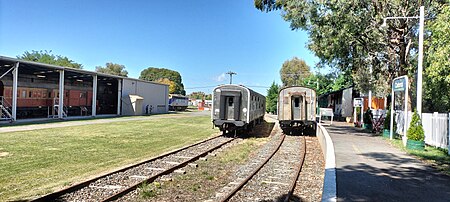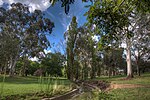Canberra Railway Museum

The Canberra Railway Museum is located at Kingston in the Australian Capital Territory next to Canberra railway station on the Bombala railway line. Since May 2018, Canberra Railway Museum has been the trading name of a not-for-profit company, Capital Region Heritage Rail Limited, established to run the museum, while ACT Heritage Rail Holdings Limited is the company responsible for safeguarding the heritage assets of the museum. Under ownership of the ACT Division, the museum housed locomotives, passenger cars, freight cars, track machinery and railway memorabilia; some of these were operated outside the ACT on tours for the paying public. Notable among the assets were Australia's oldest operating steam locomotive, and one of the world's oldest mainline steam locomotives, 1210 of the New South Wales Government Railways (built in 1878) and Australia's most powerful steam locomotive, former New South Wales Beyer, Garratt articulated steam locomotive 6029.
Excerpt from the Wikipedia article Canberra Railway Museum (License: CC BY-SA 3.0, Authors, Images).Canberra Railway Museum
Geijera Place,
Geographical coordinates (GPS) Address Website External links Nearby Places Show on map
Geographical coordinates (GPS)
| Latitude | Longitude |
|---|---|
| N -35.318 ° | E 149.155 ° |
Address
Canberra Railway Museum
Geijera Place 12
2604 , Kingston
Australia
Open on Google Maps








